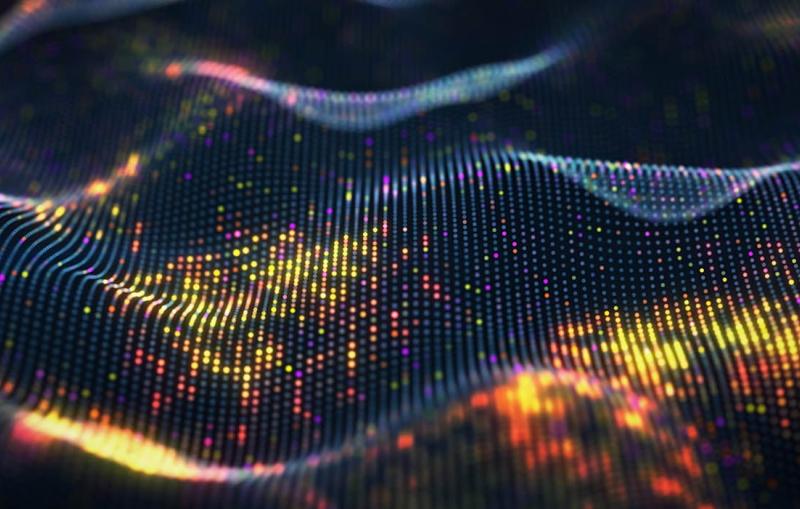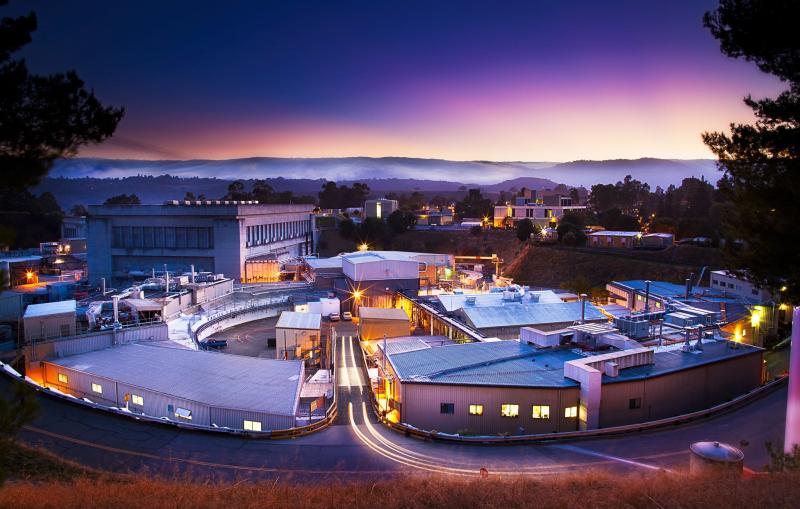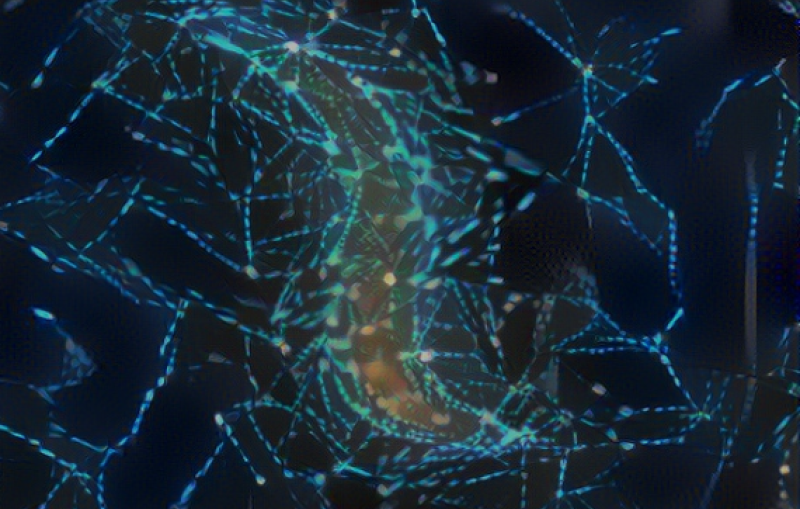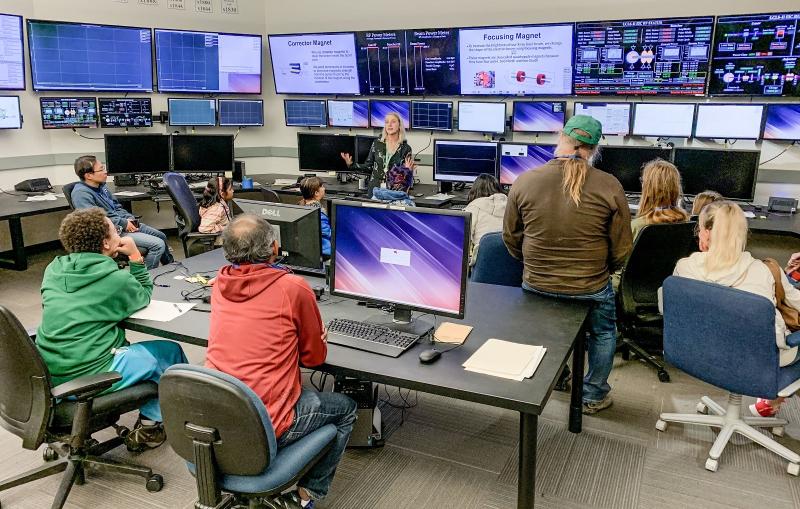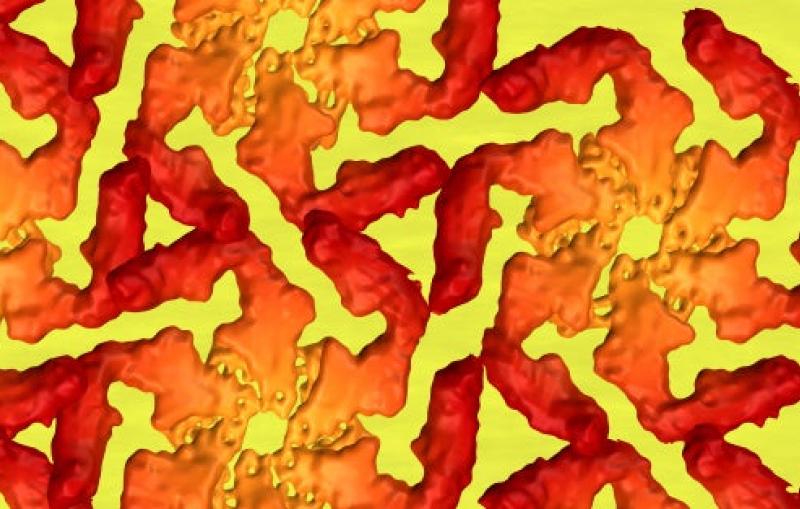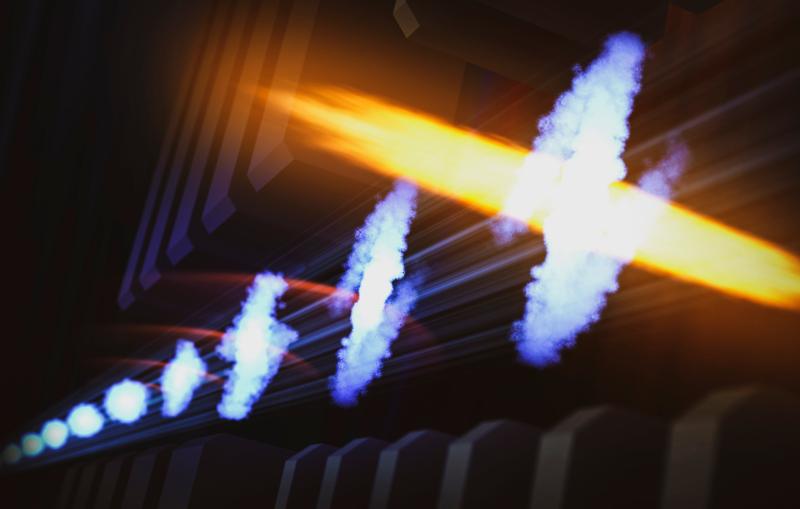A versatile set of detector building blocks prepares SLAC researchers for a challenging future of X-ray science
The ePix series of detectors is designed to keep pace with ever more demanding experiments at SLAC and elsewhere.
By Manuel Gnida
When the Department of Energy’s SLAC National Accelerator Laboratory turned on the world’s first hard X-ray free-electron laser in 2009, it marked the beginning of a new era in science – one where researchers could directly observe the ultrafast motions of atoms in real time and study how those motions affect the properties of materials and fundamental processes in chemistry and biology.
But the new machine, called the Linac Coherent Light Source (LCLS), also required a new breed of detectors that could handle the X-ray laser’s intense radiation and that were fast, stable and flexible enough to support a host of newly developed experiments.
That’s when the idea for ePix was born – a new line of exceptionally versatile detectors that would soon become the workhorse for ultrafast X-ray experiments at LCLS.
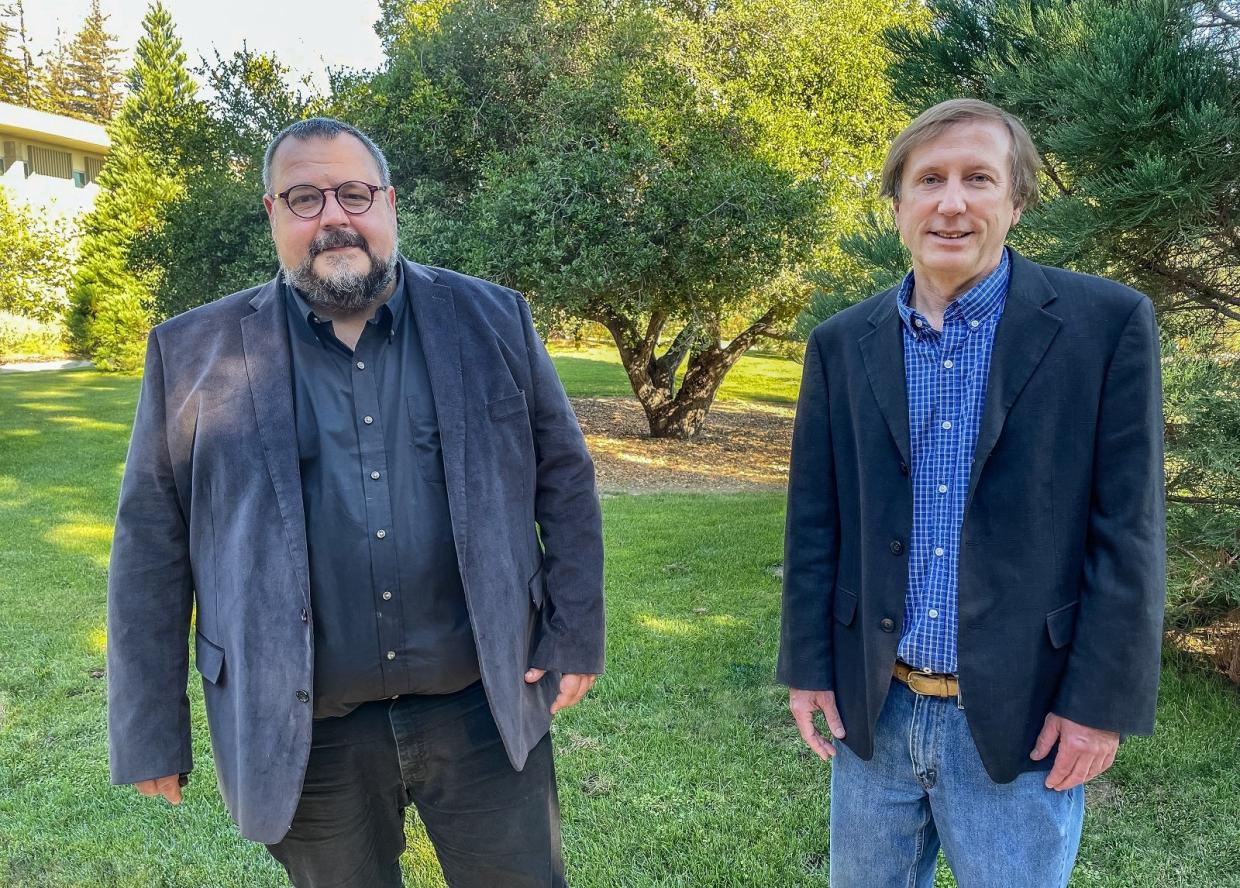
“The choice was to either develop multiple detectors, each designed for a specific experiment, or to come up with a new detector platform that uses standardized components that we could mix and match to build all kinds of detectors with specific functionality,” said Angelo Dragone, SLAC’s program director of Detector R&D and Applied Microelectronics.
Today, that building-block approach is the centerpiece of SLAC’s vision for next-generation detectors that can keep pace with ever more demanding experiments at the lab, most notably with an LCLS upgrade that will be 10,000 brighter and will fire 8,000 times faster than its predecessor. This year, ePix X-ray detectors were also named a finalist for the prestigious R&D 100 Awards.
“This is a great recognition of all the hard work put in by the team for many years,” Dragone said. “The ePix technology is a whole design philosophy, a new concept of building high-performance detectors that can be adapted for many uses. It’s rewarding to see that this approach has paid off.”
A modular detector design for a novel X-ray source
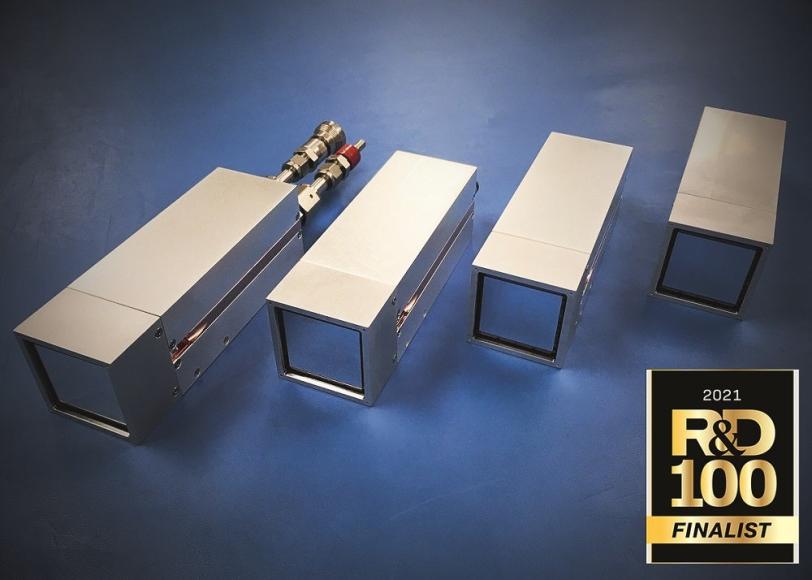
In essence, all ePix detectors consist of a shared set of building blocks: X-ray sensors, application-specific integrated circuits (ASICs) that define detector functionality, electronics to read out signals, software to collect the data, cooling systems and mechanical housings. These common components have standardized interfaces and can be put together into individual detector tiles with different functionalities. These tiles can be further combined to build larger detectors.
Unlike the X-ray detectors scientists had before, ePix detectors are fast enough for LCLS’s rapid sequence of ultrashort pulses, sensitive enough to capture both single photons and the full intensity of the X-ray beam, and stable enough to perform well over long periods of time.
“What’s key here is that the components talk the same language, so we can put them together in multiple ways very easily,” said SLAC senior staff scientist Chris Kenney, who has partnered with Dragone on driving ePix development at the lab since the beginning. “But while various detectors share a common architecture, they are tailored to the needs of the specific experiment they are used in.”
Enabling top-notch X-ray science at SLAC and elsewhere
Today, about 85% of LCLS experiments rely on ePix detectors. Over the last year, LCLS produced over a petabyte, or a quadrillion bytes, of user data – almost half of which were recorded using ePix detectors.
“Those detectors are a very powerful technology platform that is absolutely critical for our success,” said Bob Schoenlein, LCLS deputy director for science. “It was a major advance when it was first introduced, and it has been pushing the state of the art of the science we can do ever since, allowing us to collect high-fidelity data that reveal in never-before-seen detail how atomic motions affect important processes in the world around us.”
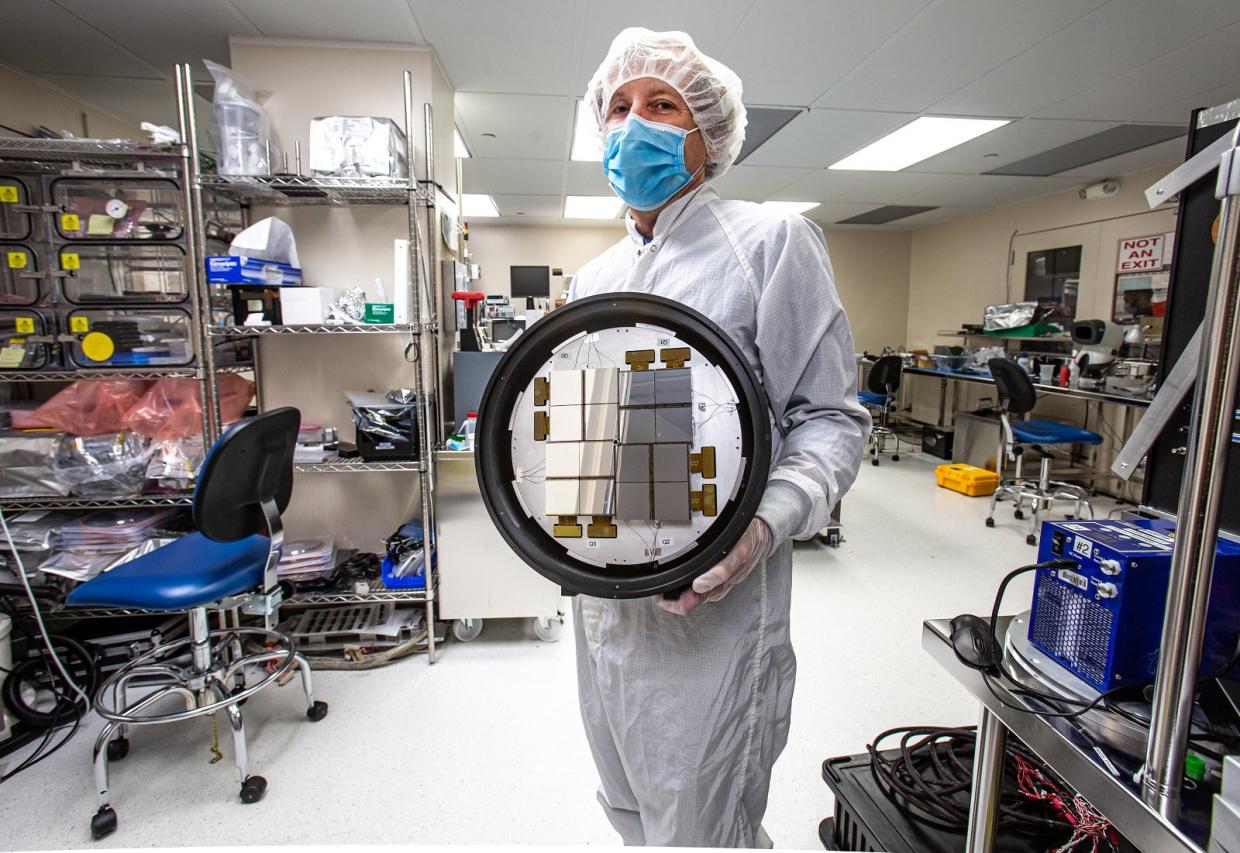
The first of the detectors was ePix100, which has ultra-low noise for the detection of faint signals and a small pixel size of 50 microns for high-resolution X-ray images. Over the years, the detector developers added many other ePix variants. Most recently, the detector designers deployed ePix10k, which can take almost 10 times more X-ray images per second than previous generations, is three times more sensitive and is available with up to 2 megapixels. Another version, ePixS, is especially well suited for spectroscopy applications that analyze X-ray light with very small differences in wavelengths, or “color.”
Researchers at the Advanced Photon Source at DOE’s Argonne National Laboratory and at the European XFEL in Germany are also using the technology, and other X-ray facilities in the world may follow. Rayonix, a company that develops X-ray detectors for research, has begun commercializing the technology, which will help make it more widely available.
Preparing for the future of X-ray science
Meanwhile, the SLAC team is already concentrating on the next challenge: Next year, the lab will turn on LCLS-II, which will fire up to a million X-ray pulses per second and generate a beam 10,000 times brighter than that of the first-generation X-ray laser.
“LCLS-II will produce data at such a high rate that we can’t physically read out and store all the information from the detector anymore,” Dragone said. He and his colleagues are therefore developing ePix versions that handle data differently.
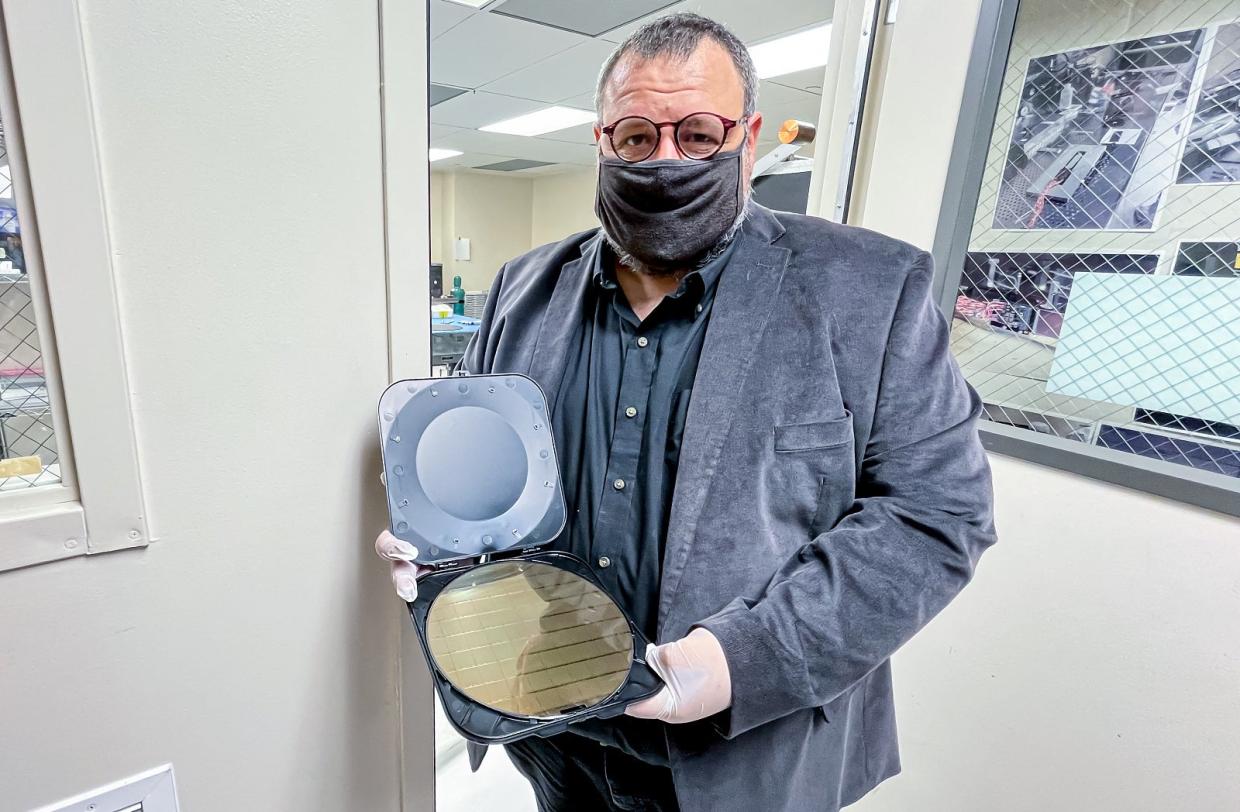
One path forward is a line of detectors for extremely high rates of unprocessed data, called ePixHR. An advanced LCLS-II data acquisition system will compress data from these detectors without affecting the quality of the subsequent analysis. That’s somewhat similar to producing a high-quality JPEG from a raw image that contains much more data. The team already has produced a prototype that can handle 5,000 images per second, and future versions will boost that number to 25,000 and eventually 100,000 images per second.
Another approach, called SparkPix, will allow researchers to take images at the same high rate that LCLS-II generates X-ray flashes. It takes advantage of the fact that not all data collected by the detector are equally important. Often only a few frames in a string of images contain actual X-ray signals, and some techniques only use a few pixels of a large image for the data analysis, so there is no need to read out and store everything all the time. SparkPix will process such data right inside the detector and extract only the information needed.
“These new developments will allow us to pursue the most ambitious scientific goals for LCLS-II,” Schoenlein said. “But it’s not only that. These detectors also create unforeseen capabilities that prompt our scientists to think about completely new types of experiments that make use of them.”
A holistic strategy for the lab’s data challenges
Extremely high data rates coming out of LCLS-II are only one of the data challenges SLAC scientists will face over the coming years. Future surveys in cosmology, including Rubin Observatory’s Legacy Survey of Space and Time and a next-generation analysis of the cosmic microwave background, and in particle physics, such as with the high-luminosity upgrade of the Large Hadron Collider at CERN, will produce gigantic data volumes that demand new approaches to how data are recorded, analyzed and managed.
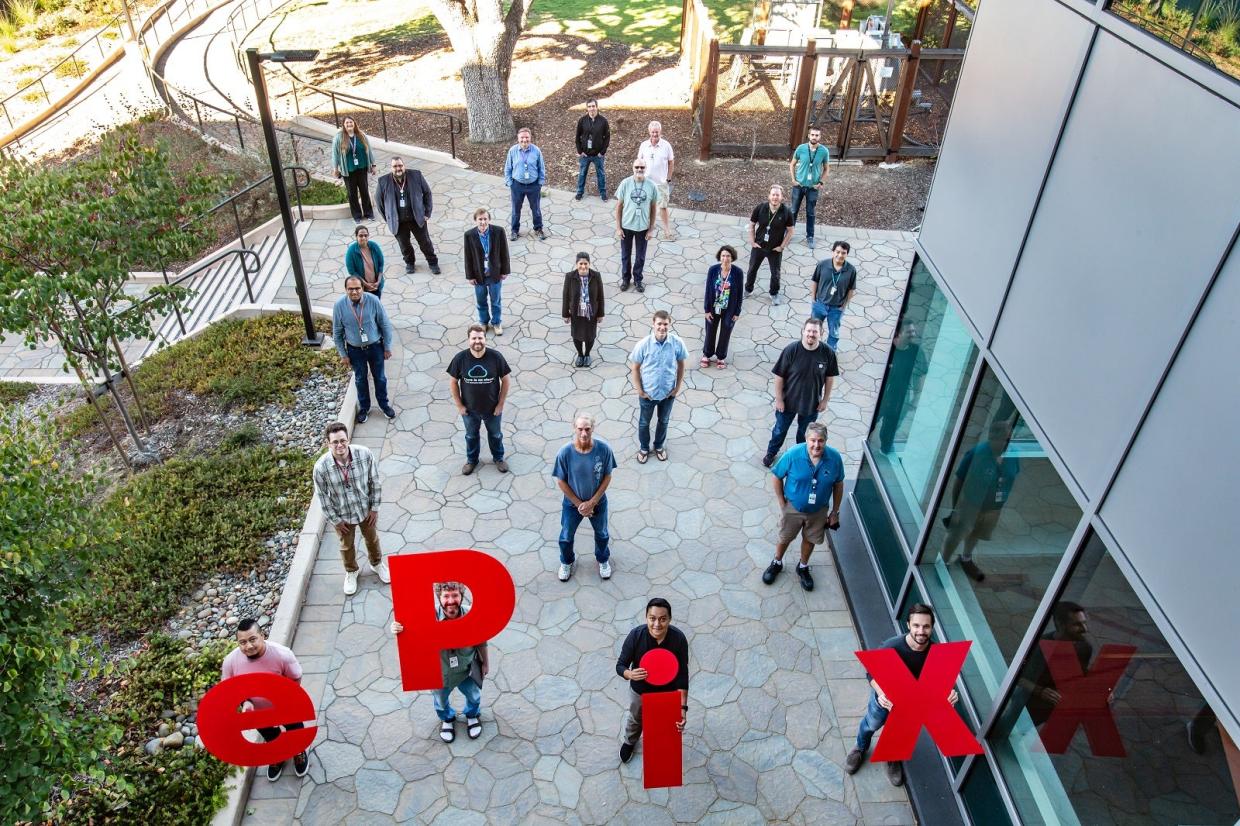
Traditionally, SLAC researchers and engineers in one discipline would mostly design and build detectors independently of what their peers working in other fields were doing. But recently, many of the designers have come together in the lab’s Technology Innovation Directorate (TID) to build the science tools of the future.
“The challenges we’re facing are very similar across the lab, so we can best serve science when we team up and choose an integrated approach for the development of data acquisition, computing and detectors,” Dragone said.
For instance, although detectors for X-rays and fundamental particles look for different signals, they use a similar set of components and often demand comparable specifications, such as fast timing, small pixels and high resolution. Having a common strategy for detector development optimizes R&D in both areas, and technical breakthroughs in one field can lead to solutions in the other.
The ePix detector program, which over the past decade involved several dozen people from various SLAC directorates and divisions, is a good example of successful strategic collaboration, Dragone said: “What started with a focus on the detector needs of our state-of-the-art X-ray light sources has now become a model in TID for the development of versatile detectors for other mission areas at the lab.”
SLAC’s LCLS and Argonne’s Advanced Photon Source are DOE Office of Science user facilities. Funding for the development of the ePix technology came from the Office of Science and the SLAC Laboratory Directed Research and Development Program.
Contact
For questions or comments, contact the SLAC Office of Communications at communications@slac.stanford.edu.
SLAC is a vibrant multiprogram laboratory that explores how the universe works at the biggest, smallest and fastest scales and invents powerful tools used by scientists around the globe. With research spanning particle physics, astrophysics and cosmology, materials, chemistry, bio- and energy sciences and scientific computing, we help solve real-world problems and advance the interests of the nation.
SLAC is operated by Stanford University for the U.S. Department of Energy’s Office of Science. The Office of Science is the single largest supporter of basic research in the physical sciences in the United States and is working to address some of the most pressing challenges of our time.
